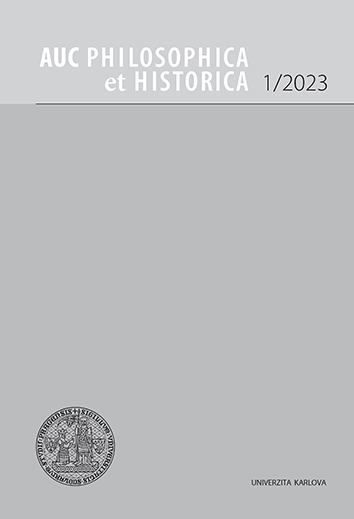AUC Philosophica et Historica je víceoborový akademický časopis zaměřený na humanitní a společenskovědné obory (filozofie, psychologie, pedagogika, sociologie, obecné, české a hospodářské dějiny, pomocné vědy historické a archivnictví, etnologie).
Časopis je indexován v databázích CEEOL, DOAJ a EBSCO.
AUC PHILOSOPHICA ET HISTORICA, Vol 2010 No 1 (2010), 125–165
První světová válka a změna prostorového paradigmatu: Naumann – Masaryk – Agnelli a Cabiati
[First World War and the Change of Spatial Paradigm: Naumann – Masaryk – Agnelli and Cabiati]
Milan Scholz
zveřejněno: 18. 05. 2015
Abstract
First World War and the Change of Spatial Paradigm: Naumann – Masaryk – Agnelli and Cabiati The First World War is considered as a turning point in modern history. The war changed the spatial paradigm. Its impact on changing human mentality enabled the formulation of territorial projects and prognoses striving for radical transformations in geographical understanding of Europe. The fall of multinational empires with parallel rise of new nation-states belong to the most significant aspects of post-war political system. However, the war projects offered a more complex set of territorial concepts ranging from radical nationalism to dissolving nation-states in supra-national communities. The article deals with comparative analysis of three war-time projects planning the post-war ‘New Europe’. The German Mitteleuropa concept formulated in Naumann’s book of the same name incited negative repercussions in the camp of Entente. In addition to Naumann’s view, the comparative research pays attention to two of them – Czech T.G. Masaryk’s concept called Nová Evropa: Stanovisko slovanské [New Europe: The Slavonic Standpoint] and G. Agnelli’s and A. Cabiati’s project of European federation (Federazione europea o lega delle nazioni?). The basic question of comparative analysis consists in the study of relationship between ‘national space’ and ‘supra-national space’. The comparison is based on four criteria – the role of national question, the projected supra-national organizations and their competences, the historical argument and the view of future. The comparison offers a possible typology of analysed projects. T.G. Masaryk’s national democratic concept claimed the self-determination principle and the equality for all nationalities regardless of their size and power. In this view, the plebiscite delimited state frontiers and the new European spatial organization consisted in existence of democratic nation-states guaranteeing minority rights. The creation and the authority of supra-national organization depended on the will of each newly formed democratic country. On contrary, F. Naumann’s (supra)national pragmatic concept foresaw obstacles linked to negotiations among a greater number of fully equal and sovereign states and distrusted the effectiveness of such a system. Naumann assumed the leadership of big nations (Americans, Russians, Englishmen, Germans) in the post-war world system and the creation of their own supra-national empires. In Naumann’s Mitteleuropa view, big nations held the decisive cultural, political and economic power; small nations could rely on cultural tolerance but their competences in deciding European affairs were restricted. Agnelli’s and Cabiati’s supranational democratic project supposed the rise of federal Europe. In this concept, the independence of European central organization vis-a-vis the member countries (especially great powers) was guaranteed by general shift of political authority from nation-states to the keeping of federal establishment – army, foreign policy and probably even financial administration were federalized. The general validity of the offered typology for the European intellectual history represents the hypothesis aroused by the study. Nevertheless, the answer transcends the analysed theme.
